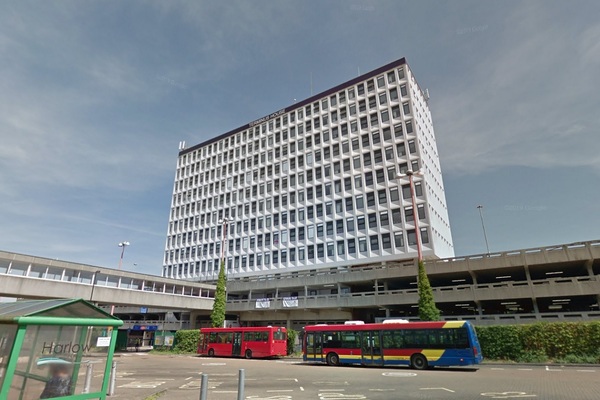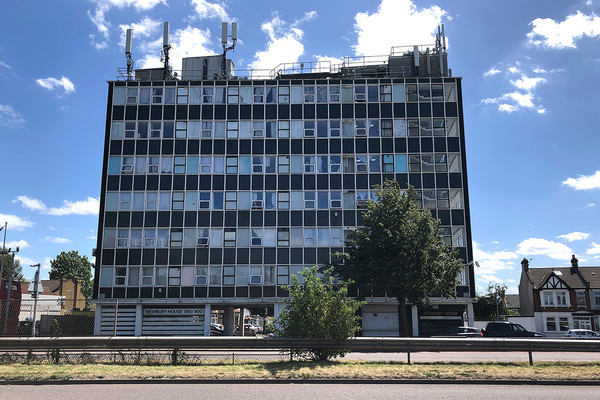 Jules Birch
Jules BirchWhy is the government going against its own evidence on permitted development?
The government’s plan to extend permitted development rights flies in the face of the evidence it has gathered, undermines its own objectives and risks unleashing a free-for-all, writes Jules Birch
Your own independent evaluation shows that the existing regime of permitted development rights (PDR) delivers poor quality homes that raise serious concerns about ‘the health, well-being and quality of life of future occupiers’.
Your own consultation showed that an overwhelming majority of consultees opposed major extensions of PDR.
You’ve previously declared your commitment to the Building Better, Building Beautiful Commission’s ‘fast track to beauty’ – the same commission that published a report warning that PDR has ‘inadvertently permissioned future slums’.
So why has housing secretary Robert Jenrick decided to go ahead and allow upwards extensions and the demolition and replacement of existing buildings through a PDR system that permits only minimal scrutiny by local communities?
Statutory instruments laid before parliament on 20 July set out the government’s planned rules firstly for upwards extensions and secondly for the demolition and replacement of existing buildings.
Broadly speaking, although there are some exemptions, the government wants to allow up to two storeys to be added to houses and detached blocks of flats of at least two storeys built between July 1948 and October 2018.
It also wants to allow purpose-built blocks of flats, offices and industrial premises built before 1990 that have been vacant for six months, are no higher than 18m and have a footprint no larger than 1,000 square metres to be demolished and replaced with buildings up to two storeys higher, up to a maximum height of 18m.
The government is also planning major extensions to the deregulated regime that produced the poor-quality homes in converted offices that academics from University College London and the University of Liverpool revealed in that independent evaluation – which the government published the same morning the Russia Report was released, after sitting on it for six months.
“At least the government will insist the new wave of PDR homes have adequate natural light, but it remains to be seen how that will be enforced and there is nothing to address the other quality issues”
The researchers found ‘homes’ as small as 10 square metres, which as Housing, Communities and Local Government Committee chair Clive Betts told Boris Johnson at prime minister’s questions are smaller than a prime ministerial limousine. Some don’t even have windows and only 3% had access to any kind of private outdoor space.
At least the government will insist the new wave of PDR homes have adequate natural light, but it remains to be seen how that will be enforced and there is nothing to address the other quality issues.
When Clive Betts pressed him directly about space standards, the prime minister blustered about his previous record: “I was proud as mayor of London to change the London plan to ensure that we went for Parker Morris plus 10% for our space standards. We will ensure that we not only build back better and more beautifully, but that we give people the space they need to live and grow in the homes that we will build.”
He totally ignored the fact that as prime minister, he has been presiding over ‘homes’ shrunk to Parker Morris minus 66%.
Meanwhile, because PDR projects are outside the normal planning system unless they require approval for additional works, they are not liable for Section 106 contributions to affordable housing or the Community Infrastructure Levy.
It’s not hard to see many other issues may arise from this new regime.
Won’t upwards extensions of existing private blocks simply enrich freeholders by billions while scuppering the changes of leasehold reform? What about fire safety in the extended blocks?
Why would any local developer worth its salt bring forward a conventional development liable for planning gain when it can build a contribution-free permitted development?
Why would the owner of a high-street store bother to protect jobs and struggle through post-lockdown recession when it could simply sell off the site for homes?
Why would the owner of, say, a vacant printworks in London’s Docklands bother with a planning fight about 21% or 35% affordable housing when he could do a permitted development with none, provided the existing building is smaller than 1,000 square metre and meets the requirements of use class B1?
What about a potential war in the suburbs over upwards extensions of houses that could make disputes between neighbours over ‘garden-grabbing’ look like vicarage tea parties?
One further major issue that’s just speculation on my part arises when you consider what sort of blocks of flats is most likely to have been built between 1948 and 1990.
“Why would the owner of a high-street store bother to protect jobs and struggle through post-lockdown recession when it could simply sell off the site for homes?”
The deregulated regime for demolition and replacement could lead to a new wave of council estate ‘regeneration’ if developers and compliant local authorities can find a way to claim that blocks have been vacant for six months.
This time, though, there would be no affordable housing mandated and no pesky planning requirements on resident ballots.
The extension of PDR may yet turn out to be an interim measure ahead of the wider shake-up of the planning system expected later this month.
But even that will take time and if the government continues with the approach of two parallel planning systems for our town centres, it risks undermining both the ‘fast track to beauty’ it endorses and the housing-led regeneration of the high street that think tanks rightly advocate.
If it does not trust local authorities to do the job – as seems to be the thrust behind PDR – then let it make the case for a new wave of development corporations, zoning or both.
Whatever the merits of those ideas, we should be thinking about a strategy for the best, post-coronavirus future for our town centres and the best way of delivering homes as part of it, not just unleashing a free-for-all.
Jules Birch, columnist, Inside Housing












